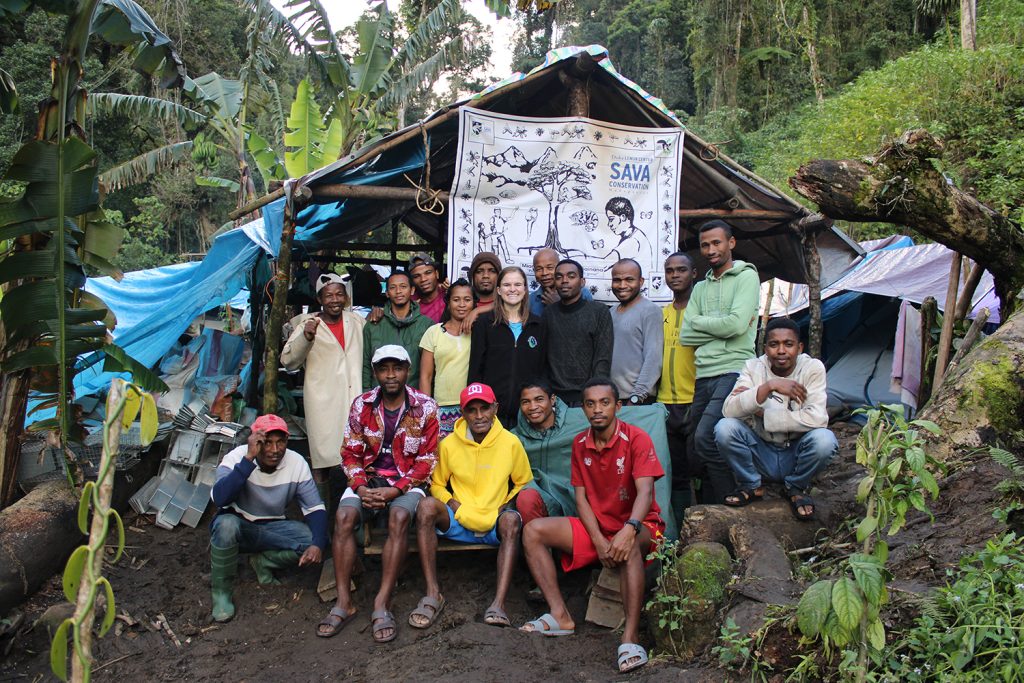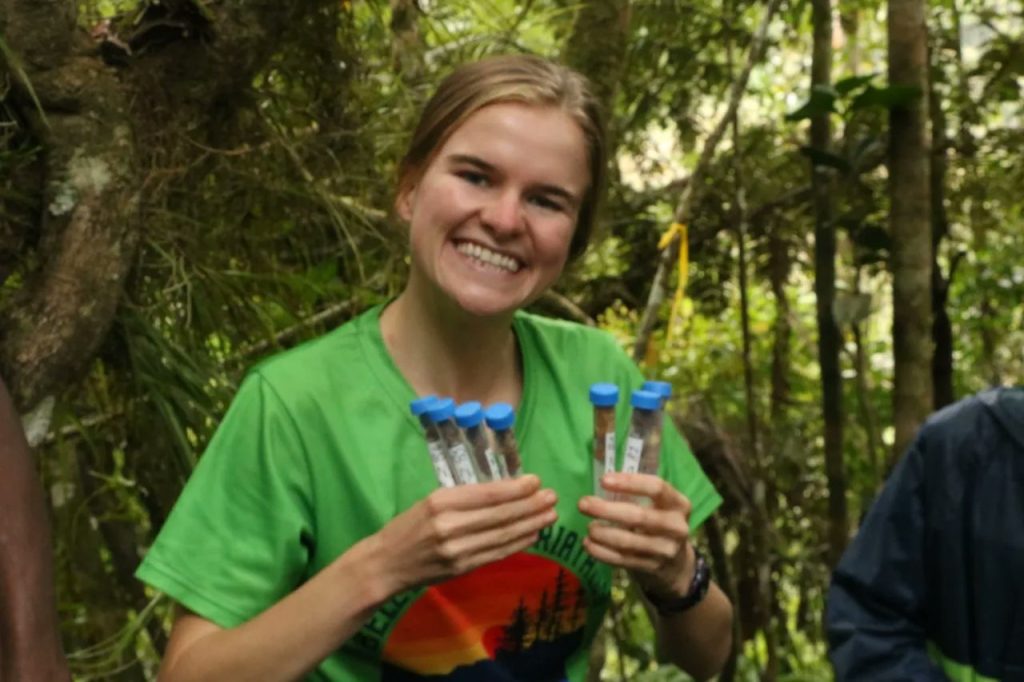For some people, the word “rainforest” conjures up vague notions of teeming jungles. But Camille DeSisto sees something more specific: a complex interdependent web.
For the past few years, the Duke graduate student has been part of a community-driven study exploring the relationships between people, plants and lemurs in a rainforest in northern Madagascar, where the health of one species depends on the health of others.
Many lemurs, for example, eat the fruits of forest trees and deposit their seeds far and wide in their droppings, thus helping the plants spread. People, in turn, depend on the plants for things like food, shelter and medicines.
But increasingly, deforestation and other disturbances are throwing these interactions out of whack.
DeSisto and her colleagues have been working in a 750,000-acre forest corridor in northeast Madagascar known as the COMATSA that connects two national parks.
The area supports over 200 tree species and nine species of lemurs, and is home to numerous communities of people.

“People live together with nature in this landscape,” said DeSisto, who is working toward her Ph.D. in ecology at the Nicholas School of the Environment.
But logging, hunting and other stressors such as poverty and food insecurity have taken their toll.
Over the last quarter century, the area has lost 14% of its forests, mostly to make way for vanilla and rice.
This loss of wild habitats risks setting off a series of changes. Fewer trees also means fewer fruit-eating lemurs, which could create a feedback loop in which the trees that remain have fewer opportunities to replace themselves and sprout up elsewhere — a critical ability if trees are going to track climate change.
DeSisto and her colleagues are trying to better understand this web of connections as part of a larger effort to maximize forest resilience into an uncertain future.
To do this work, she relies on a network of a different sort.
The research requires dozens of students and researchers from universities in Madagascar and the U.S., not to mention local botanists and lemur experts, the local forest management association, and consultants and guides from nearby national parks, all working together across time zones, cultures and languages.

Together, they’ve found that scientific approaches such as fecal sampling or transect surveys can only identify so much of nature’s interconnected web.
Many lemurs are small, and only active at night or during certain times of year, which can make them hard to spot — especially for researchers who may only be on the ground for a limited time.
To fill the gaps, they’re also conducting interviews with local community members who have accumulated knowledge from a lifetime of living on the land, such as which lemurs like to munch on certain plants, what parts they prefer, and whether people rely on them for food or other uses.
By integrating different kinds of skills and expertise, the team has been able to map hidden connections between species that more traditional scientific methods miss.
For example, learning from the expertise of local community members helped them understand that forest patches that are regenerating after clear-cutting attract nocturnal lemurs that may — depending on which fruits they like to eat — promote the forest’s regrowth.

Research collaborations aren’t unusual in science. But DeSisto says that building collaborations with colleagues more than 9,000 miles away from where she lives poses unique challenges.
Just getting to her field site involves four flights, several bumpy car rides, climbing steep trails and crossing slippery logs.
“Language barriers are definitely a challenge too,” DeSisto said.
She’s been studying Malagasy for seven years, but the language’s 18 dialects can make it hard to follow every joke her colleagues tell around the campfire.
To keep her language skills sharp she goes to weekly tutoring sessions when she’s back in the U.S., and she even helped start the first formal class on the language for Duke students.
“I like to think of it as language opportunities, not just language barriers,” DeSisto said.”
“Certain topics I can talk about with much more ease than others,” she added. “But I think making efforts to learn the language is really important.”
When they can’t have face-to-face meetings the team checks in remotely, using videoconferencing and instant messaging to agree on each step of the research pipeline, from coming up with goals and questions and collecting data to publishing their findings.
“That’s hard to navigate when we’re so far away,” DeSisto said. But, she adds, the teamwork and knowledge sharing make it worth it. “It’s the best part of research.”
This research was supported by Duke Bass Connections (“Biocultural Sustainability in Madagascar,” co-led by James Herrera), Duke Global, The Explorers Club, Primate Conservation, Inc., Phipps Conservatory and Botanical Gardens, and the Garden Club of America.
